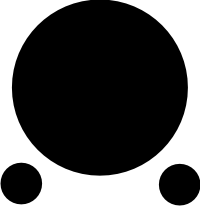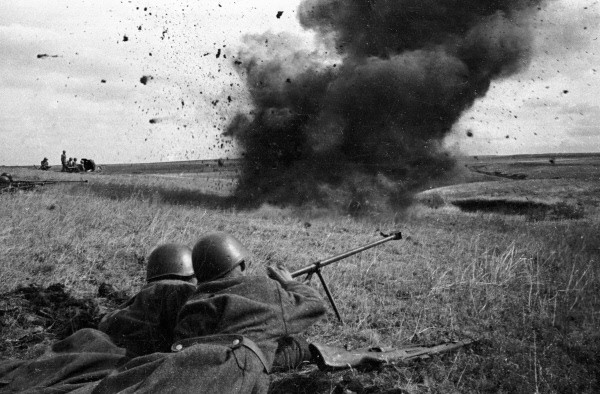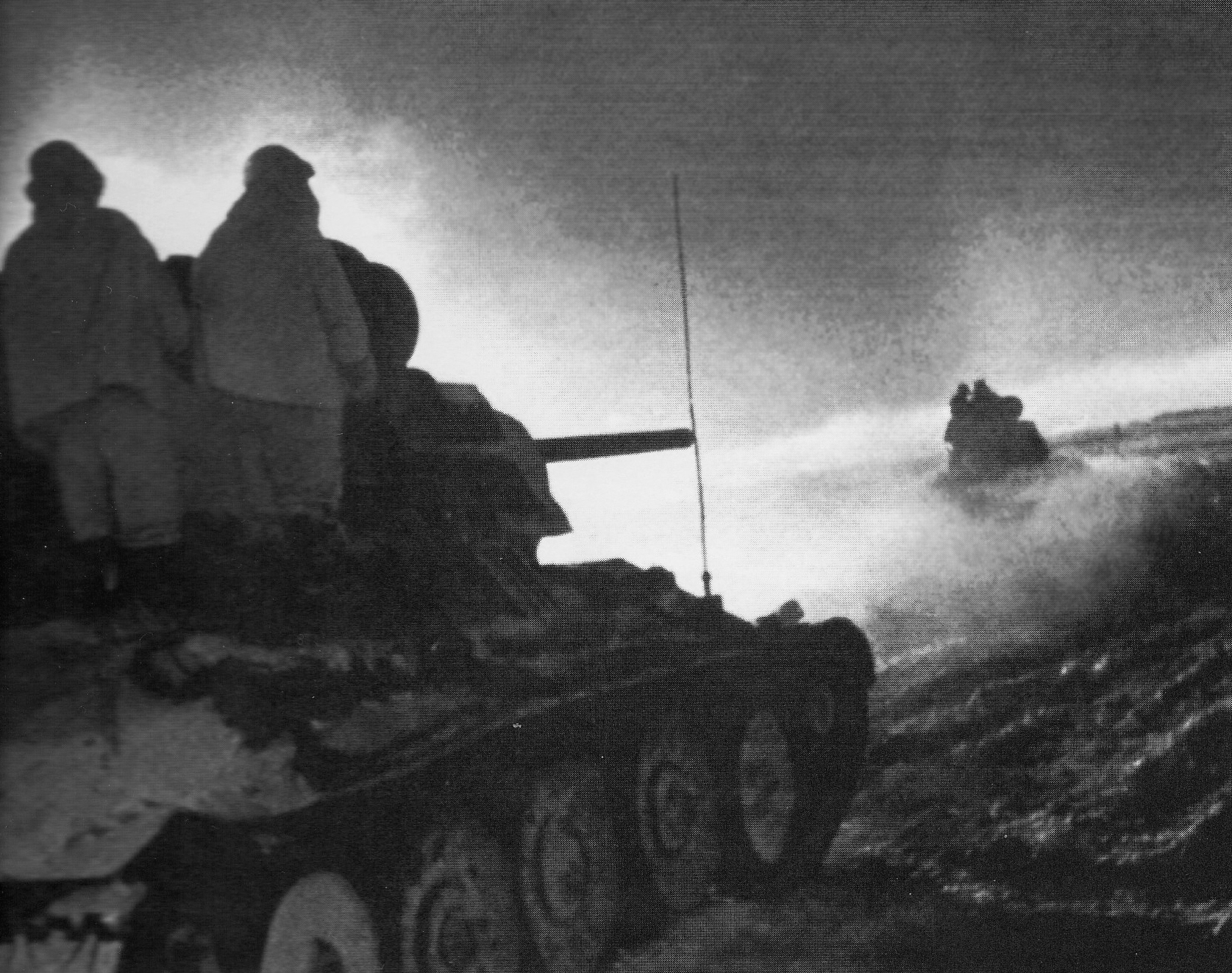|
III Corps (Germany)
III Army Corps was a corps level formation of the German Army during World War II. III Army Corps The III Corps was formed in October 1934 as III. Armeekorps. The corps took part in Fall Weiss, the 1939 invasion of Poland as a part of Army Group North. It then took part in Fall Gelb as a part of Army Group A, participating in the assault through the Ardennes. In March 1941, the corps was upgraded to a motorised corps status and redesignated III Armeekorps (mot). The Corps was attached to Army Group South for Operation Barbarossa, the invasion of the Soviet Union. The corps advanced through Ukraine and took part in the Battle of Brody, Battle of Kiev, Battle of Rostov, Battle of Kharkov and Battle of Uman. III Panzer Corps III Panzer Corps was formed in June 1942 from III Army Corps and attached to Army Group A, the formation tasked with capturing the Caucasus as a part of Fall Blau. In mid-1943, following the loss of the 6th Army at the Battle of Stalingrad, III Panzer Co ... [...More Info...] [...Related Items...] OR: [Wikipedia] [Google] [Baidu] |
World War I
World War I or the First World War (28 July 1914 – 11 November 1918), also known as the Great War, was a World war, global conflict between two coalitions: the Allies of World War I, Allies (or Entente) and the Central Powers. Fighting took place mainly in European theatre of World War I, Europe and the Middle Eastern theatre of World War I, Middle East, as well as in parts of African theatre of World War I, Africa and the Asian and Pacific theatre of World War I, Asia-Pacific, and in Europe was characterised by trench warfare; the widespread use of Artillery of World War I, artillery, machine guns, and Chemical weapons in World War I, chemical weapons (gas); and the introductions of Tanks in World War I, tanks and Aviation in World War I, aircraft. World War I was one of the List of wars by death toll, deadliest conflicts in history, resulting in an estimated World War I casualties, 10 million military dead and more than 20 million wounded, plus some 10 million civilian de ... [...More Info...] [...Related Items...] OR: [Wikipedia] [Google] [Baidu] |
Operation Barbarossa
Operation Barbarossa was the invasion of the Soviet Union by Nazi Germany and several of its European Axis allies starting on Sunday, 22 June 1941, during World War II. More than 3.8 million Axis troops invaded the western Soviet Union along a front, with the main goal of capturing territory up to a line between Arkhangelsk and Astrakhan, known as the A-A line. The attack became the largest and costliest military offensive in history, with around 10 million combatants taking part in the opening phase and over 8 million casualties by the end of the operation on 5 December 1941. It marked a major escalation of World War II, opened the Eastern Front—the largest and deadliest land war in history—and brought the Soviet Union into the Allied powers. The operation, code-named after the Holy Roman Emperor Frederick Barbarossa ("red beard"), put into action Nazi Germany's ideological goals of eradicating communism and conquering the western Soviet Union to repopulate it w ... [...More Info...] [...Related Items...] OR: [Wikipedia] [Google] [Baidu] |
Operation Roland
Operation Roland was a local German offensive inside the Soviet Union during the Second World War on the Eastern Front, and was conducted as a local operation within the overarching German summer offensive, Operation Citadel, on the southern side of the Kursk salient. The German forces of the III Panzer Corps and the 2nd SS Panzergrenadier Division Das Reich of the II SS Panzer Corps attempted to envelop and destroy Soviet forces of the Voronezh Front. This operation was necessitated by the failure of the German II SS Panzer Corps to break through Soviet forces during the Battle of Prokhorovka on 12 July. Therefore, German commanders decided to first link up the III Panzer Corps, which had been lagging behind due to heavy Soviet resistance, with the II SS Panzer Corps, in order to consolidate the German positions into a continuous frontline without inward bulges and enable the two panzer corps to overrun Soviet forces defending Prokhorovka together. The linking up of the two Ger ... [...More Info...] [...Related Items...] OR: [Wikipedia] [Google] [Baidu] |
4th Panzer Army
The 4th Panzer Army (), operating as Panzer Group 4 () from its formation on 15 February 1941 to 1 January 1942, was a German panzer formation during World War II. As a key armoured component of the Wehrmacht, the army took part in the crucial battles of the German-Soviet war of 1941–45, including Operation Barbarossa, the Battle of Moscow, the Battle of Stalingrad, the Battle of Kursk, and the 1943 Battle of Kiev. The army was destroyed during the Battle of Stalingrad, but later reconstituted. Formation and preparations for Operation Barbarossa As part of the German High Command's preparations for Operation Barbarossa, Generaloberst Erich Hoepner was appointed to command the 4th Panzer Group in February 1941. It was to drive toward Leningrad as part of Army Group North under Wilhelm von Leeb. On 30 March 1941, Hitler delivered a speech to about two hundred senior Wehrmacht officers where he laid out his plans for an ideological war of annihilation (''Vernichtungskrieg'') ... [...More Info...] [...Related Items...] OR: [Wikipedia] [Google] [Baidu] |
German Army Detachment Kempf
Army Detachment Kempf was an army-sized formation of the ''Wehrmacht'' on the Eastern Front during World War II. As part of Army Group South, Detachment Kempf saw action during Operation Citadel, the German attempt to cut off the Kursk salient and destroy a large part of the Soviet Army. Operational history The detachment was formed on 1 February 1943 as ''Armee-Abteilung Lanz'', led by Hubert Lanz. On 21 February 1943 Lanz was replaced by Werner Kempf and the detachment was renamed to reflect this change. In February–March that year, The detachment fought in the Third Battle of Kharkov. The detachment took part in the Battle of Kursk. Beginning on the night of 4/5 July 1943, the III Panzer Corps, the detachment's primary attack formation, spearheaded the thrust east of Belgorod. After the failure of the operation, Army Detachment Kempf retreated with the rest of Army Group South Army Group South () was the name of one of three German Army Groups during World War II. I ... [...More Info...] [...Related Items...] OR: [Wikipedia] [Google] [Baidu] |
Operation Citadel
Operation Citadel () was the German offensive operation in July 1943 against Soviet forces in the Kursk salient, proposed by Generalfeldmarschall Erich von Manstein during the Second World War on the Eastern Front that initiated the Battle of Kursk. The deliberate defensive operation that the Soviets implemented to repel the German offensive is referred to as the Kursk Strategic Defensive Operation. The German offensive was countered by two Soviet counter-offensives, Operation Polkovodets Rumyantsev () and Operation Kutuzov (). For the Germans, the battle was the final strategic offensive that they were able to launch on the Eastern Front. As the Allied invasion of Sicily began, Adolf Hitler was forced to divert troops training in France to meet the Allied threats in the Mediterranean, rather than use them as a strategic reserve for the Eastern Front. Germany's extensive loss of men and tanks during the operations ensured that the victorious Soviet Red Army enjoyed the strategi ... [...More Info...] [...Related Items...] OR: [Wikipedia] [Google] [Baidu] |
Army Group Don
Army Group Don () was a short-lived army group of the German Army during World War II. It existed between November 1942 and February 1943 and was primarily concerned with the Battle of Stalingrad, which was concurrently fought. History After a large-scale Soviet counterattack, "Operation Uranus", had resulted in the encirclement of the German 6th Army, Adolf Hitler named Erich von Manstein as commander of a newly-formed "Army Group Don," named for the Don River, on 20 November 1942. The new formation was to consist of 6th Army, 4th Panzer Army and the remnants of the Romanian 3rd and 4th Armies. Army Group Don was created from the headquarters of the Eleventh Army in the southern sector of the Eastern Front on 22 November 1942. Army Group Don only lasted until February 1943 when it was combined with Army Group B and was made into the new Army Group South. The only commander of Army Group Don during its short history was Field Marshal (''Generalfeldmarschall'') Erich von ... [...More Info...] [...Related Items...] OR: [Wikipedia] [Google] [Baidu] |
Battle Of Stalingrad
The Battle of Stalingrad ; see . rus, links=on, Сталинградская битва, r=Stalingradskaya bitva, p=stəlʲɪnˈɡratskəjə ˈbʲitvə. (17 July 19422 February 1943) was a major battle on the Eastern Front of World War II, beginning when Nazi Germany and its Axis allies attacked and became locked in a protracted struggle with the Soviet Union for control over the Soviet city of Stalingrad (now known as Volgograd) in southern Russia. The battle was characterized by fierce close-quarters combat and direct assaults on civilians in aerial raids; the battle epitomized urban warfare, being the single largest and costliest urban battle in military history. It was the bloodiest and fiercest battle of the entirety of World War II—and arguably in all of human history—as both sides suffered tremendous casualties amidst ferocious fighting in and around the city. The battle is commonly regarded as the turning point in the European theatre of World War II, as Germany ... [...More Info...] [...Related Items...] OR: [Wikipedia] [Google] [Baidu] |
Fall Blau
Case Blue (German: ''Fall Blau'') was the ''Wehrmacht'' plan for the 1942 strategic summer offensive in southern Russia between 28 June and 24 November 1942, during World War II. The objective was to capture the oil fields of Baku (Azerbaijan SSR), Grozny and Maikop for two purposes: to enable the Germans to re-supply their low fuel stock and also to deny their use to the Soviet Union, thereby bringing about the complete collapse of the Soviet war effort. After Operation Barbarossa failed to destroy the Soviet Union as a political and military threat the previous year, Adolf Hitler, the ''Führer'' of Nazi Germany, recognized that Germany was now locked in a war of attrition, and he was also aware that Germany was running low on fuel supply and would not be able to continue attacking deeper into enemy territory without more stock. With this in mind, Hitler ordered for the preparation of offensive plans for summer 1942 to secure the Soviet oil fields in the Caucasus. The op ... [...More Info...] [...Related Items...] OR: [Wikipedia] [Google] [Baidu] |
Caucasus
The Caucasus () or Caucasia (), is a region spanning Eastern Europe and Western Asia. It is situated between the Black Sea and the Caspian Sea, comprising parts of Southern Russia, Georgia, Armenia, and Azerbaijan. The Caucasus Mountains, including the Greater Caucasus range, have conventionally been considered as a natural barrier between Europe and Asia, bisecting the Eurasian landmass. Mount Elbrus, Europe's highest mountain, is situated in the Western Caucasus area of Russia. On the southern side, the Lesser Caucasus includes the Javakheti Plateau and the Armenian highlands. The Caucasus is divided into the North Caucasus and South Caucasus, although the Western Caucasus also exists as a distinct geographic space within the North Caucasus. The Greater Caucasus mountain range in the north is mostly shared by Russia and Georgia as well as the northernmost parts of Azerbaijan. The Lesser Caucasus mountain range in the south is mostly located on the territory of sout ... [...More Info...] [...Related Items...] OR: [Wikipedia] [Google] [Baidu] |
Battle Of Uman
The Battle of Uman (15 July – 8 August 1941) was the World War II German offensive in Uman, Uman, Ukraine against the 6th Army (Soviet Union), 6th and 12th Army (Soviet Union), 12th Soviet Armies. In a three-week period, the Wehrmacht encircled and annihilated the two Soviet armies. The battle occurred during the Battle of Kiev (1941), Kiev defensive operation between the elements of the Red Army's Southwestern Front, retreating from the Lwow salient, and German Army Group South, commanded by Field Marshal Gerd von Rundstedt, as part of Operation Barbarossa. The Soviet forces were under overall command of the Southwestern Direction, commanded by Marshal Semyon Budyonny, which included the Southwestern Front (Soviet Union), Southwestern Front commanded by Colonel General Mikhail Kirponos and Southern Front (Soviet Union), Southern Front commanded by General Ivan Tyulenev. The 6th army was commanded by Lieutenant General I. N. Muzychenko and the 12th army by Major General Pav ... [...More Info...] [...Related Items...] OR: [Wikipedia] [Google] [Baidu] |
Second Battle Of Kharkov
The Second Battle of Kharkov or Operation Fredericus was an Axis powers, Axis counter-offensive in the region around Kharkov against the Red Army Izium bridgehead offensive conducted 12–28 May 1942, on the Eastern Front (World War II), Eastern Front during World War II. Its objective was to eliminate the Izium bridgehead over Seversky Donets or the "Barvenkovo bulge" () which was one of the Soviet offensive's staging areas. After a Battle of Moscow, winter counter-offensive that drove German troops away from Moscow but depleted the Red Army's reserves, the Kharkov offensive was a new Soviet attempt to expand upon their strategic initiative, although it failed to secure a significant element of surprise. On 12 May 1942, Soviet forces under the command of Marshal Semyon Timoshenko launched an offensive against the German 6th Army (Wehrmacht), 6th Army from a salient established during the Barvenkovo–Lozovaya Offensive, winter counter-offensive. After a promising start, the off ... [...More Info...] [...Related Items...] OR: [Wikipedia] [Google] [Baidu] |





